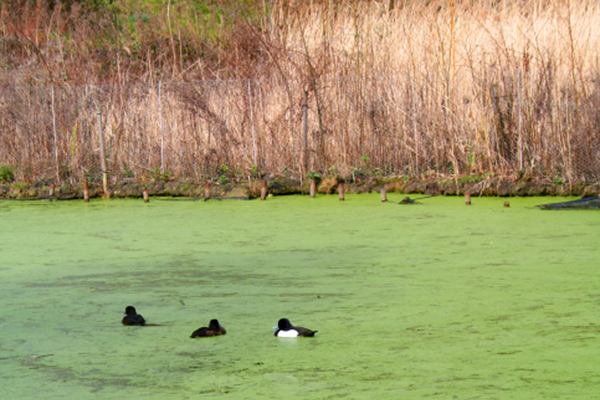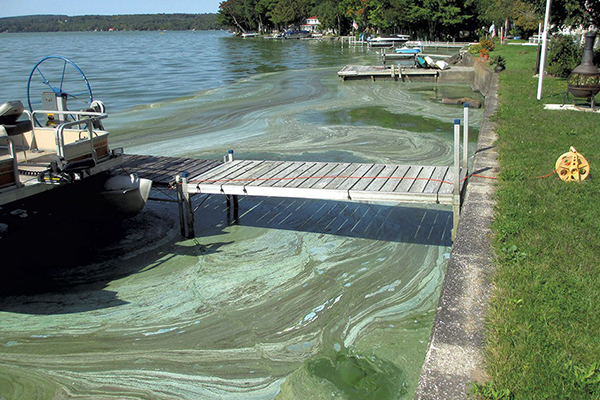After news reports about an adult dog and a puppy that died from blue-green algae poisoning, dog lovers at The Valley Reporter and in The Valley need to know how to keep their canine companions safe.
The dogs that died drank water from a private pond last month. Blue-green algae can contain cyanobacteria and there is no way to know if the algae bloom contains the toxin without testing. Small dogs are more susceptible due their small size. Children are also susceptible to cyanobacteria poisoning.
Blue-green algae blooms occur when water is warm and still and phosphorus and nitrogen are readily available. Blue-green algae blooms can be caused by agricultural and stormwater runoff as well as leaching from septic systems. The blooms most often occur in ponds, ditches and lakes where water can be still and stagnant. Rivers with running water are unlikely to develop blooms.
“The best way to protect yourself is to know what a bloom looks like and to stay out of the water when one is present,” said Bridget O’Brien, a radiological and toxicological analyst with the Vermont Department of Health, in a press release.
“Blooms are usually green or blue-green and can make the water look like pea soup or spilled paint, but they can be other colors and consistencies too,” she added.
Signs of cyanobacterial poisoning in pets include vomiting, diarrhea, bloody stool, pale mucous membranes, jaundice, seizures, disorientation, coma, shock, excessive secretions, muscle tremors, rigidity or paralysis, difficulty breathing and death.
Cyanobacteria produces microcystins and anatoxins that can affect pets, humans and livestock. According to the website petpoisonhelpline.com, microcystins can result in liver damage or failure. Signs of liver injury include vomiting, diarrhea, blood in stool or black, tarry stool, weakness, pale mucous membranes, jaundice, seizures, disorientation, coma and shock. Death generally follows within days as a result of liver failure. Blood work changes include elevated liver enzymes, a low blood sugar, a low protein, and even abnormal clotting. Aggressive, immediate treatment is necessary to help treat this quick-acting, potentially fatal poison.
Anatoxins result in neurotoxicity evidenced by excessive secretions (e.g., salivation, lacrimation, etc.), neurologic signs (including muscle tremors, muscle rigidity, paralysis, etc.), blue discoloration of the skin and mucous membranes and difficulty breathing. Death follows within minutes to hours of exposure as a result of respiratory paralysis. Livestock that graze around affected ponds or lakes and are able to drink from them are often found dead near the water source. Treatment includes anti-seizure medication, oxygen and aggressive veterinary care.
Vermont has a state online tracker for public water bodies: https://apps.health.vermont.gov/vttracking/cyanobacteria/2019/d/index.html








